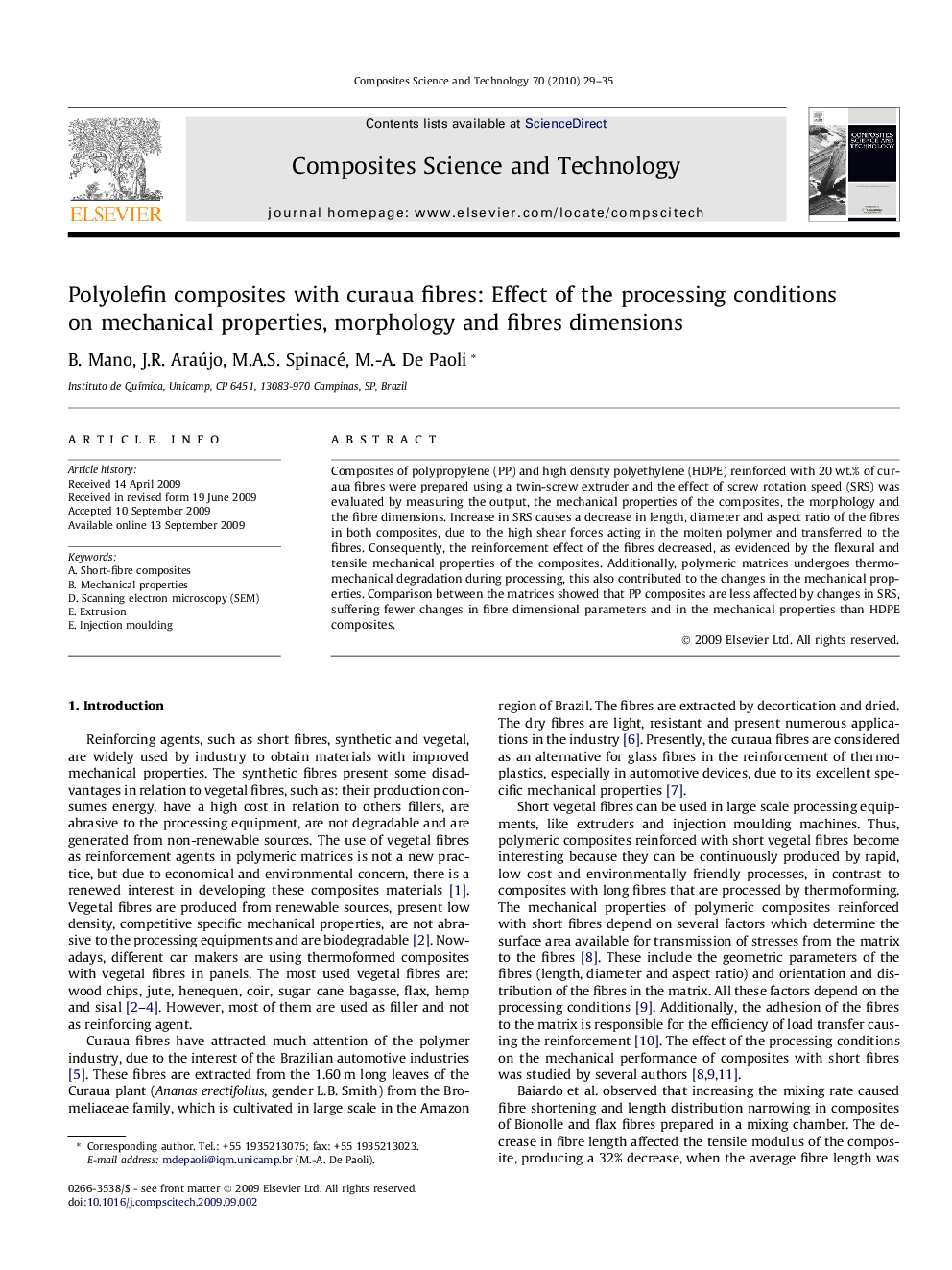| Article ID | Journal | Published Year | Pages | File Type |
|---|---|---|---|---|
| 821296 | Composites Science and Technology | 2010 | 7 Pages |
Composites of polypropylene (PP) and high density polyethylene (HDPE) reinforced with 20 wt.% of curaua fibres were prepared using a twin-screw extruder and the effect of screw rotation speed (SRS) was evaluated by measuring the output, the mechanical properties of the composites, the morphology and the fibre dimensions. Increase in SRS causes a decrease in length, diameter and aspect ratio of the fibres in both composites, due to the high shear forces acting in the molten polymer and transferred to the fibres. Consequently, the reinforcement effect of the fibres decreased, as evidenced by the flexural and tensile mechanical properties of the composites. Additionally, polymeric matrices undergoes thermo-mechanical degradation during processing, this also contributed to the changes in the mechanical properties. Comparison between the matrices showed that PP composites are less affected by changes in SRS, suffering fewer changes in fibre dimensional parameters and in the mechanical properties than HDPE composites.
